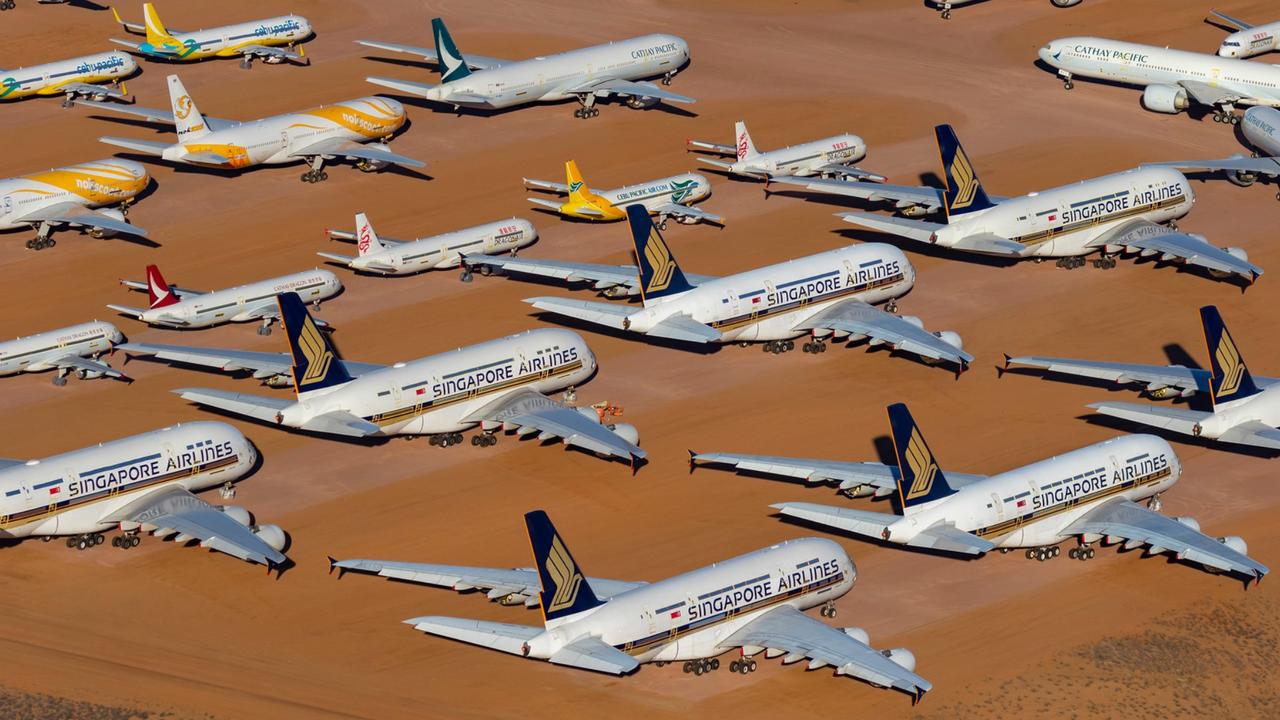Incredible images of plane ‘graveyard’ near Alice Springs
At a time when global air travel has plummeted to nearly nothing, this patch of the Aussie outback has never seen more action.
COVID-19 has turned airports into ghost towns and reduced global air traffic to a tiny fraction of what it normally is.
But in this dusty outback “graveyard” in the Northern Territory, the plane population is booming.
Billions of dollars worth of passenger jets are waiting out the pandemic in the Asia Pacific Aircraft Storage facility near Alice Springs, where the dry climate is ideal for preserving them until they’re needed again.
Singapore Airlines and Cathay Pacific are among the airlines that have sent much of their grounded fleet there, including mighty Airbus A380s.


The facility has been so in-demand during COVID-19, the company behind the storage facility has plans to expand so it can accommodate up to 200 more aircraft.
Photographer Seth Jaworski captured startling images of rows and rows of mothballed jets at the massive facility earlier this month.
“I’ve been monitoring the steady build up of aircraft since April and headed out as soon as the NT border opened to NSW,” he told news.com.au.


RELATED: Follow the latest coronavirus updates
RELATED: Travel bubble: ‘Things have gone wrong’
“There were already around 100 aircraft on the ground when I was there, and two more Cathay Pacific 777s arrived during my visit.
“Expansion work is well underway to accommodate at least that number again. Prior to this year there were only a handful of aircraft stored there.”


Singapore and Hong Kong, where many of these planes have come from, experience high humidity and heat that risks corroding unused aircraft over time.
Like the Arizona Boneyard in the US city of Tucson that’s home to 4500 grounded aircraft, the dry climate of the outback is ideal for preserving the aircraft for long-term storage.
RELATED: ‘Ship graveyard’ where cruise ships go to die

The pandemic has seen a dramatic downturn in air travel, both domestically and internationally, in 2020.
Last week, Sydney Airport boss Geoff Culbert said the gradual reopening of interstate borders was increasing demand for travel – but to nowhere near previous levels.
Before South Australia and the Northern Territory opened their borders with NSW, the airport was operating at just three per cent capacity.
Sydney Airport is now at seven per cent capacity.
If Queensland went ahead with relaxing restrictions for all of NSW, Mr Culbert said that would see the airport back to 17 per cent full.



